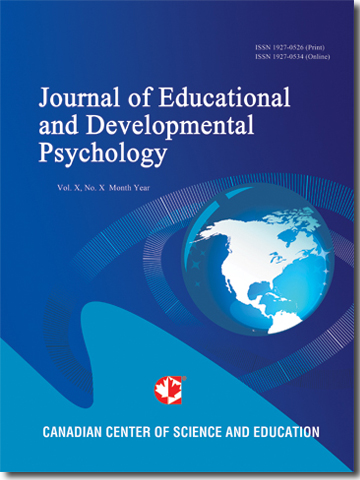Performance of Children and Adolescents on Random Number Generation as a measure of Executive Functions
- Georgios Chatzopoulos
- Magda Dinou
- Hariklia Proios
Abstract
This study investigated the age-related differences in the random number generation (RNG) of children aged 7 to 15 years old (n=106) divided into three groups (7-9, 10-12 and 13-15 years of age) as it was compared to computer-generated pseudorandom sequences. The results showed that there was an age effect on four out of seven indices of randomization that are known to tap the Inhibition ability and the Updating ability (i.e., active manipulation of relevant information in working memory). The participants’ (children’s and adolescents’; n=106) responses were significantly different from pseudorandom sequences (n=106) produced by the RgCalc program and no gender differences were observed. The RNG task indices that reflect inhibition ability did not correlate with the participants’ performance on the Stroop color-word task. The development of executive functions in school-aged children and adolescents is discussed.
- Full Text:
 PDF
PDF
- DOI:10.5539/jedp.v11n1p37
Journal Metrics
(The data was calculated based on Google Scholar Citations)
1. Google-based Impact Factor (2021): 1.11
2. h-index (December 2021): 29
3. i10-index (December 2021): 87
4. h5-index (December 2021): N/A
5. h5-median (December 2021): N/A
Index
- Academic Journals Database
- CNKI Scholar
- Copyright Clearance Center
- CrossRef
- Elektronische Zeitschriftenbibliothek (EZB)
- EuroPub Database
- Excellence in Research for Australia (ERA)
- Harvard Library
- Jisc Library Hub Discover
- JournalSeek
- JournalTOCs
- LIVIVO (ZB MED)
- LOCKSS
- MIAR
- Open Access Journals Search Engine(OAJSE)
- PKP Open Archives Harvester
- Publons
- ROAD
- Scilit
- SHERPA/RoMEO
- Standard Periodical Directory
- Stanford Libraries
- Technische Informationsbibliothek (TIB)
- UCR Library
- UoB Library
- WorldCat
- Zeitschriften Daten Bank (ZDB)
Contact
- Carol WongEditorial Assistant
- jedp@ccsenet.org
